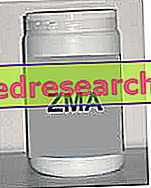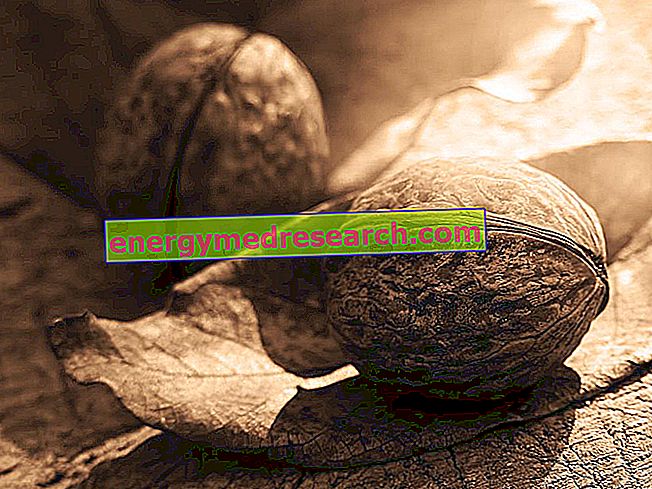See also: ZMA supplements
ZMA (Zinc monomethionine-aspartate and Magnesium Aspartate) is a supplement used by many bodybuilders and athletes to stimulate the production of testosterone and IGF-1. Each ZMA capsule contains a special combination of zinc, magnesium and vitamin B6 or pyridoxine. The two minerals are present in their most bioavailable form (zinc-moniomethionine and zinc-magnesium aspartate).

The three ingredients of ZMA play a leading biological role and among these, magnesium is undoubtedly one of the most deficient minerals in the typical diet of industrialized countries.
Intense physical activity is accompanied by an increased need for vitamins and minerals, not always compensated by adequate nutrition. In our article on vitamin supplements, we have seen how important it is to make the right food choices to meet the minimum needs of these nutrients. When it is not possible to follow a 100% correct diet, dietary supplementation is a valid aid for sportsmen and sedentary people. ZMA is therefore a useful product for most people, given that about 50% of the US population does not take enough magnesium with their diet. A similar argument can be made with zinc (especially for vegetarians), while pyridoxine intake levels are generally more than sufficient to cover the need for this vitamin.
Zinc Magnesium and Vitamin B6
The supplements based on ZMA contain the three micronutrients in a precise proportion: the zinc content generally ranges from 20 to 30 mg, that of Magnesium from 400 to 500 mg, while that of vitamin B6 is around 10 mg (such values reflect those of recommended daily intake, based on data provided by the company that holds the patent). ZMA should not be taken together with supplements or foods containing calcium sources (this mineral tends to inhibit the absorption of zinc, magnesium and iron).
ZMA should be taken before going to bed and on an empty stomach. In this way we try to maximize the stimulus on GH secretion, which reaches its peak during the first hours of night rest and is favored by fasting (see growth hormone).
A study dated 1999 monitored Football players during eight weeks of spring training. The group that had taken the ZMA regularly showed significant improvements in strength, muscle mass, free testosterone levels (up to 30%) and IGF-1. However, it must be emphasized that this study was funded and promoted by the same company that holds the ZMA patent.
In 2004 new research established that ZMA is not able to influence strength and hormonal levels; however during the study the researchers were able to appreciate a lower muscular catabolism. The same scholars therefore support the need for further investigations to establish the real effectiveness of the ZMA:
The point of the situation
The ZMA is undoubtedly an interesting supplement, which deserves due attention. Some of the assumptions on which it is based are scientifically based and the usefulness of an integration of zinc and especially magnesium is recognized by many doctors. However, hoping to increase their testosterone levels by 30% with a simple supplement is very optimistic. From this point of view the ZMA has nothing to envy, for better or for worse, to all those supplements, such as tribulus terrestris, which promise to significantly improve the endogenous production of testosterone, without being able to keep what was promised.
Finally, remember that overcoming the recommended intake rates, hoping to further enhance the alleged anabolic characteristics of the ZMA, is a wrong attitude, counterproductive and dangerous to health.
Appendix
ZINC: it is contained in good quantities in oysters, wheat germ, beef, whole grains and liver. Zinc in plant foods is difficult to absorb due to the simultaneous presence of fiber and phytates. Daily requirement: 10-15 mg for men, 7-9 for women
ZINC IN FOODS:
| FOOD rich in zinc | Content (mg / 100g) |
| Oysters | 42 |
| Yeast | 8 |
| Liver | 8 |
| Milk | 3.3 |
| Meat | 1-4 |
MAGNESIUM IN FOODS:
CONTENT IN MAGNESIUM | |||||
| HIGH | mg / 100 g | MEDIUM | mg / 100 g | BASS | mg / 100 g |
| Bran | 420 | Corn | 120 | Pasta | 57 |
| Bitter chocolate | 292 | chard | 113 | peaches | 54 |
| almonds | 255 | Sweet chocolate | 107 | White flour | 37 |
| Cocoa | 192 | Brown rice | 106 | Bananas | 31 |
| peanuts | 167 | Dried figs | 82 | Calf | 28 |
| Whole grain bread | 60 | Beef, pork | 25 | ||
| Cherries | 14 | ||||
| Plums, oranges | 11 | ||||
| Apples, pears | 10 | ||||
DAILY REQUIREMENT: 6mg / kg (450mg / day for a 75kg individual)



